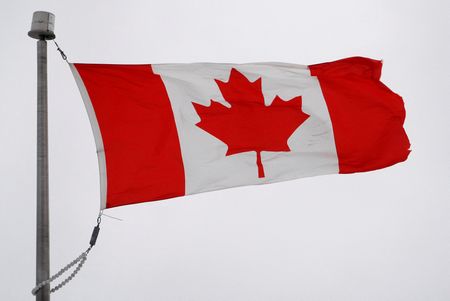

By Julie Gordon
OTTAWA (Reuters) -Canada’s economic growth was not as robust as expected in the first quarter, dragged by lower export volumes, official data showed on Tuesday, though activity was bang-on central bank projections and unlikely to sway plans for an oversized rate hike in June.
The Canadian economy grew at an annualized rate of 3.1% in the first quarter, below analyst predictions of 5.4% but in line with the Bank of Canada’s forecast of 3.0%, Statistics Canada data showed.
Real GDP likely rose 0.2% in April, preliminary data showed, as a drop in resale real estate activity was offset by gains in mining and oil and gas. March GDP rose 0.7%, beating expectations of 0.5%.
“It was weaker than expected for Q1 but domestic demand was quite robust,” said Andrew Kelvin, chief Canada strategist at TD Securities. “That speaks to reasonable underlying momentum in the economy out of the first quarter into Q2.”
“We still are looking at an inflation outlook that is much too strong. For the next two meetings at least the BoC needs to be looking at aggressively lifting rates,” Kelvin added.
The Bank of Canada is widely expected to increase its policy rate to 1.5% from 1.0% at its Wednesday decision. The central bank has said it will act forcefully to tame inflation, which inched up to 6.8% in April, a three decade high.
“Today’s data were a miss versus consensus expectations, but it shouldn’t do anything to change the Bank of Canada’s plans for a 50-bp rate hike tomorrow,” said Royce Mendes, head of macro strategy at Desjardins Group, in a note.
“The economy is overheating and the policy rate is still too low. It’s time for monetary policy to normalize.”
Quarterly growth slowed compared to the previous two quarters on a drop in international export volumes, down 2.4%, Statscan said.
But domestic demand rose more than in previous quarter and household spending increased, with outlays for goods at their highest level in five years, excluding the third quarter 2020 pandemic-related swing.
Compensation for employees also rose 3.8%, the largest quarterly gain since 1981, excluding the pandemic swing, and up from 2.0% in the fourth quarter of 2021.
The Canadian dollar was trading 0.2% lower at 1.2682 to the greenback, or 78.85 U.S. cents.
(Reporting by Julie Gordon in Ottawa, additional reporting by Fergal Smith in TorontoEditing by Nick Zieminski)

